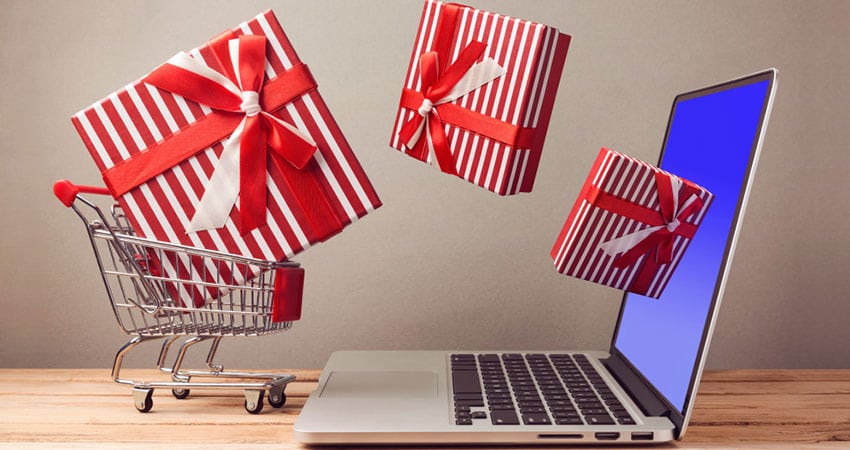Most retailers are acutely aware: November and December have nearly twice the revenue potential as any other month, and the momentum only continues to grow. According to research from the National Retail Federation (NRF) Holiday Headquarters, consumer spending is up 3.4% this year, and for the first time in survey history, consumers ranked online shopping as their go-to holiday shopping destination, ahead of traditional brick-and-mortar retail stores.
So, what exactly is driving purchases during this year’s holiday season? It’s all about the deals! According to the survey, more than half (73%) of consumers ranked sales and price discounts as the top factors in deciding where to shop this year, making Black Friday and Cyber Monday two of the most anticipated holiday shopping days. However, for retailers looking to implement a promotion and increase sales during the holidays, Black Friday and Cyber Monday aren’t the only deal days.
Early holiday promotions, otherwise known as ultimate and timely flash sales, are also attracting consumers’ attention and driving interest in brands. Brands such as Haute Look by Nordstrom, Lilly Pullitzer, Kate Spade, Falabella and Rue la la have been quick to capitalize on this growing trend, offering steep discounts on limited time offers and it’s paying off – online spending is on the rise.
All consumers love a good holiday deal, but there’s nothing like an unexpected sale on merchandise that usually goes for big money. Who will show up this year? Based on our global research findings from Retail in 4 Dimensions: Understanding Consumer Behavior in an Age of Relativity, we think you will see all shopper types at different times this season.
- The Dealer emerges on Black Friday and starts early. Additional research from the NRF reported that more than 154 million shoppers hit the streets, shopped the stores and completed their shopping on the big holiday weekend in 2016. Retailers need to empower the Dealer to complete majority of their shopping in one day.
- The Nomad cruises the shopping centers and websites waiting for something to catch their eye. They may shop, socialize and lunch with friends and family on Black Friday later in the day. The deal is nice but not the priority. If they can, they will complete all the shopping online.
- The Player emerges on December 24. They know they will pay a premium but they ran out of time. They wanted the perfect, latest item for one person. The luxury brand caught them early with a handbag or the latest version of the hottest technology, but then they realized they had a few more gifts to buy. Price is not an issue or concern for the Player, but showing up empty handed on Christmas morning is.
All promotional events require enterprise discipline and inventory visibility to satisfy demand. Without proper preparation, the speed and volume will exaggerate the flaws and impinge on margins, preparation and personalization. Supporting a flash sale operationally, in terms of fulfilling orders and servicing customers, is not a trivial effort. For retailers looking to implement flash sale promotions of their own during this year’s holiday season, here are four key areas to consider:
- Speed Search: The consumer needs to be able to search and find merchandise quickly. Flash sales create a sense of competition to seek and find merchandise faster than other consumers. Online make sure to leverage keywords and filters, and tune your search capabilities to ensure the best performance. In store, tie between the circular, displays and inventory availability is critical. A Dealer will pre-shop and map out a plan of attack in the store.
- Volume of Choice: The assortment needs to be large enough that it is worth focusing to shop. The market basket grows but it feels like such a deal. How fast can you present the choices and render the images on your site? Are you limiting the inventory you can showcase? Unleash the chains. Make sure you can scale.
- Ease of Transaction: The checkout process should have equal speed to the search. A consumer wants to know that the inventory is reserved once it is in the cart. This is a great catalyst to close the sale. For the in-store experience, a consumer will compare the discount percentage and begin to shed and doubt purchases if the queue stalls. The store associates must be empowered with state of art technology and hardware. Promotions must be integrated to the POS and offer swift transactions.
- Marketing: Are you sending the invitation to your best customers? Take the time to segment and analyze your customer base to drive that personalized interaction. There are technology solutions available to help you scale this outreach.
Which retailers will reign supreme this holiday season? Will they recognize their customer? Do they serve them well? Only time will tell.
Jeff Warren is Vice President of Retail Strategy & Solutions Management at Oracle

